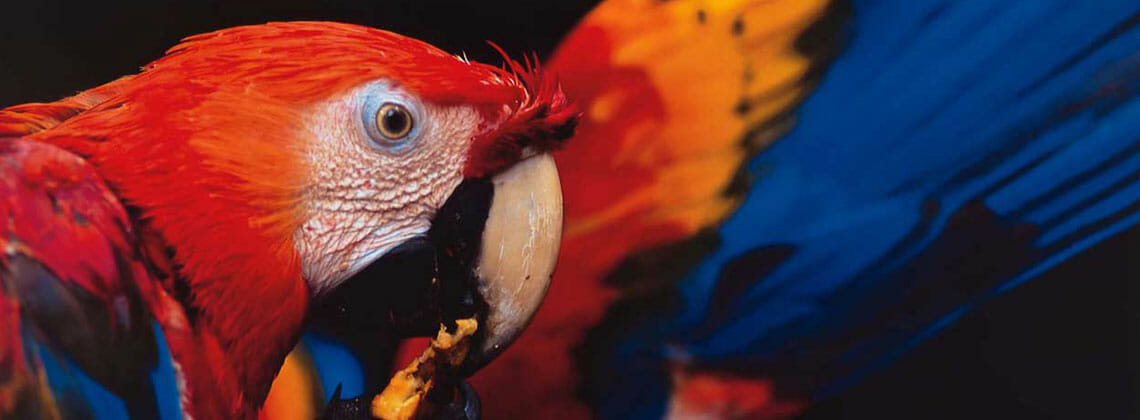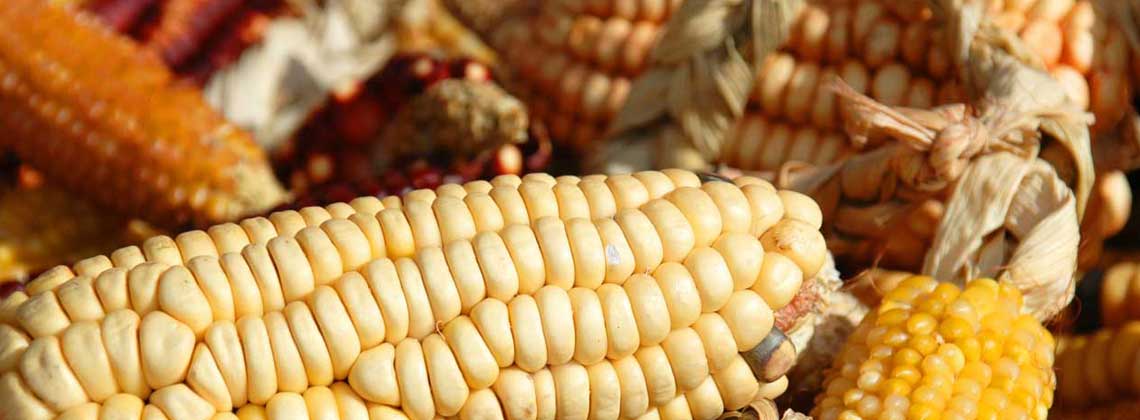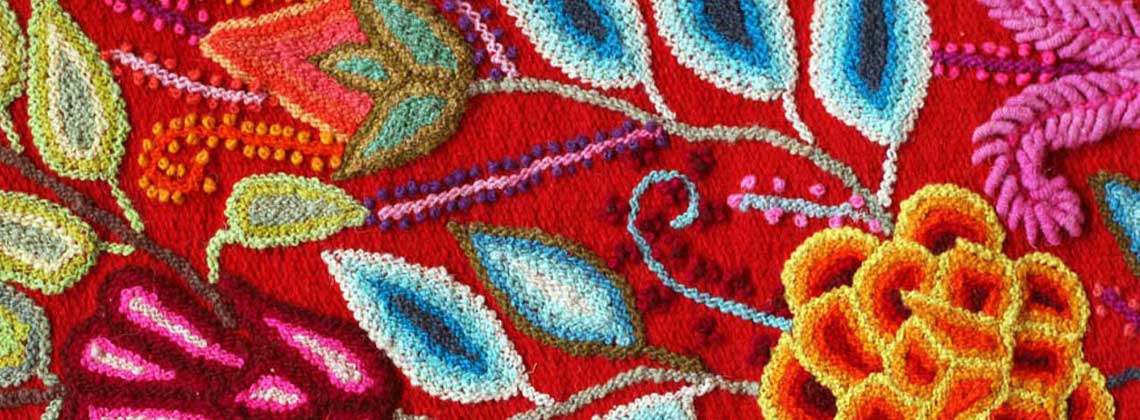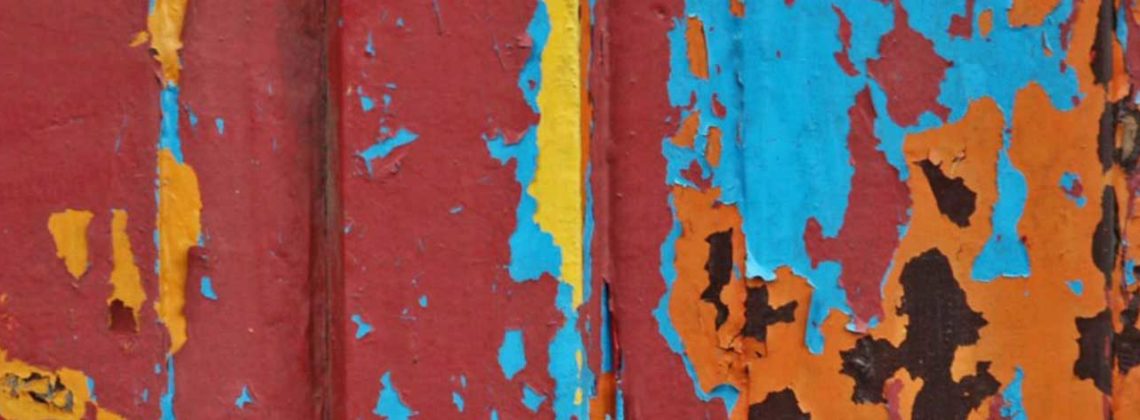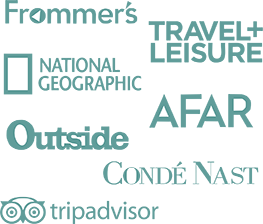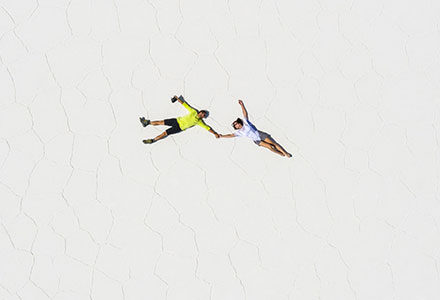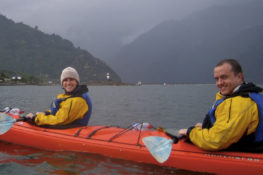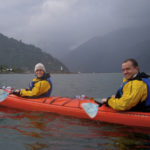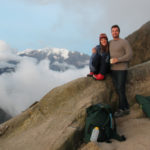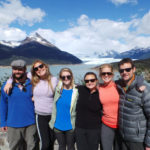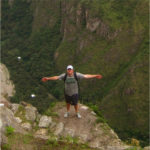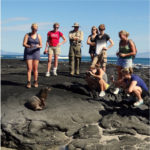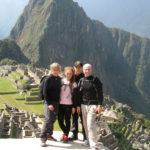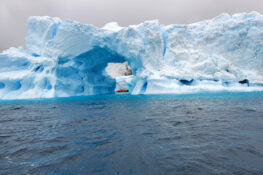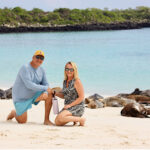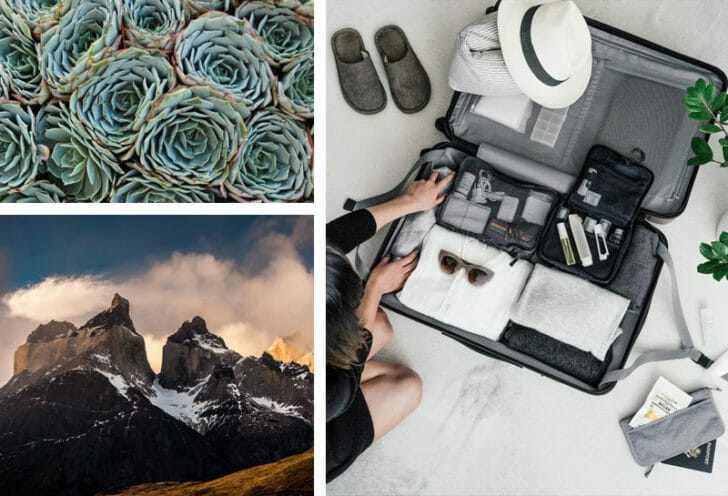
Right photo via @eggcanvas on Instagram.
Let us break down what to pack for your next trip to South America, and demonstrate how to layer properly to make sure you’re comfortable, even when the weather isn’t. We’ve got you covered with helpful links to packing lists and resources for the Galapagos Islands, Patagonia, the Inca Trail, and more.
Packing for a trip to South America can be overwhelming since this vast continent has many different temperate zones and variable climates. To be prepared on your adventures and flexible throughout the day, it’s best to dress in layers. Here at Knowmad Adventures, a company dedicated to creating custom and stress-free travel experiences in South America, one of our greatest joys is making travel easier for our travelers. Read on to learn how to layer and to, ultimately, be best prepared for your next trip.
When layering, it’s smart to start out with a base layer for wicking away sweat, followed by a mid or insulating layer, and topped off with a shell layer for wind and rain protection. While choosing a base layer, synthetic materials and natural fibers such as merino wool are best (in comparison to cotton) since they wick away moisture effectively and are quick-drying. For your insulating layer, choose materials such as fleece, down, or some sort of synthetic material since they are best at retaining heat. The shell layer should be able to protect against elements like wind and rain to keep the rest of your layers dry. It is best to start your day wearing or bringing all of your layers; that way you’re nice and toasty starting out in the chill of the morning and can easily peel back a couple layers once the sun starts to shine. Of course, in warmer climates, like the Galapagos Islands, your layers will be lighter and will serve more for sun protection, but the general practice is the same.
If you’re interested in crafting a custom adventure to South America, reach out to our Trip Specialists at 612-315-2894 or [email protected] to begin planning your trip today!
Learning How to Layer for Cooler Weather
The tips below are helpful when you’re traveling to cooler regions with variable weather, like Patagonia in Chile or Argentina, or the Sacred Valley in Peru.
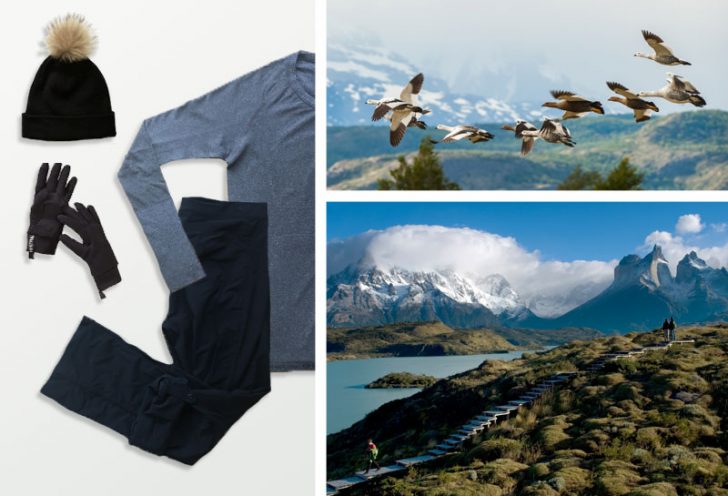
On top, I suggest a base layer like the one pictured above (here is a similar one from Lululemon), a hooded fleece for a mid or insulating layer, and a waterproof yet breathable, shell for the outer layer.
It’s a good idea to follow a similar system for your legs. I like to start out with a long underwear base layer and then wear a waterproof or water resistant hiking pant, like the pair pictured above, for my outer layer (here is a similar pair from REI). If the weather is warmer I will wear a pair of hiking shorts under my outer-layer pants. This way I have the option to wear just my shorts later in the day when it warms up. You could also opt for zip-off hiking pants and eliminate the need for shorts underneath your outer-layer pants.
In Patagonia, layers are incredibly important because the weather in this region is highly variable — the locals of the area say that you can experience all four seasons in just one day! Be sure to keep this in mind when packing your layers for Torres del Paine. One of the key reasons for layering while in Torres del Paine is the strong winds. It is very important to have a shell layer that will protect you from the wind and possible rain. If your shell layer is penetrable by wind you may find yourself cold, especially when stopping to take in views. And although oftentimes the weather in the park can be cool due to this wind, the sun is still very strong, so it’s also important to wear sunscreen and bring along a hat or sunglasses to protect yourself from sunburn.
Hikes in the park tend to be longer and more strenuous, so it’s of the utmost importance to protect your feet. When hiking long distances it is always a good idea to have a silk or nylon sock liner (to wick away sweat) under your wool hiking socks. This will make it so that the thicker hiking socks will not cause blisters due to excessive rubbing. A nice pair of hiking shoes or boots is also key. Depending on the level of hikes you will be doing you will want to make sure to have correct ankle support. Hiking or trail running shoes are good for lighter hikes with less rugged terrain where you will not need as much ankle support. If you will be doing more complex, rugged hikes, or be hiking for an extended period of time on rocky terrain, hiking boots will give you more ankle support and help to keep your feet in good shape. Be sure to break in any new hiking shoes and boots well before your travels to prevent blistering while on the trail.
Other helpful items:
- Daypack (to store water, extra layers, snacks / lunch, trekking poles, sunscreen, camera, binoculars, etc.)
- Sunglasses
- A hat (for sun and warmth)
- Gloves
- Buff
For a more detailed packing list, visit the Chile FAQs or Peru FAQs section of our website. If you’re interested in crafting an adventure to Patagonia or the Sacred Valley, reach out to our Trip Specialists at 612-315-2894 or [email protected] to begin planning your custom trip today!
Learning How to Layer for Warmer Weather
These tips are useful for those traveling to warmer weather destinations, like these regions of Ecuador and Peru: the Amazon Rainforest, the Cloudforest, and the Galapagos Islands.
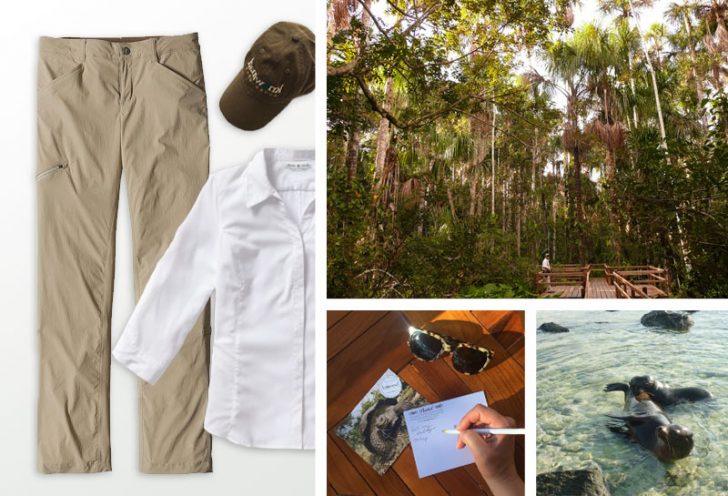
We recommend wearing clothing to help you handle the heat and humidity and also to protect you from the sun and/or bugs. The best option for this is typically a lighter-colored, lightweight, loose-fitting shirt (like this one from REI) that covers your back and shoulders, and lightweight pants (like this pair from Patagonia). It’s a good idea to wear pants instead of shorts, because for many of the wildlife walking excursions you will wear a pair of rubber boots provided by your lodge and wearing pants will reduce rubbing. We also recommend wearing a tank under your shirt to soak in the sun when on the water, or if you know your excursion is going to involve a waterfall or swimming hole, wear your suit underneath so you can cool down with a quick dip. Layer rain pants and jacket over your light-weight pants and shirts to keep you dry when it rains.
Other helpful items:
- Daypack (to store water, extra layers, snacks / lunch, trekking poles, sunscreen, camera, binoculars, etc.)
- Lightweight rain gear (jacket and pants)
- Unscented toiletries (so as to not attract bugs)
- Insect repellent
- An extra set of socks (especially if you are in a very muggy region like the Cloudforest in Ecuador)
- Swimsuit (for many excursions in the Galapagos Islands)
- A pack towel
For even more packing and layering tips specific to these regions, visit the Ecuador FAQs section of our website and check out Tara and Renee’s 4 Unique Experiences + What to Pack For a Trip To Ecuador blog post. If you’re interested in crafting an adventure to the Galapagos Islands or the Amazon Rainforest, reach out to our Trip Specialists at 612-315-2894 or [email protected] to begin planning your custom trip today!
It is always Knowmad’s goal that our travelers feel prepared for and excited about their adventure to South America. If you have any questions we can help answer, or if you’d like to discuss planning your own adventure to South America, give one of our Trip Specialists a call today at at 612-315-2894, or email us at [email protected] to begin planning your personalized itinerary.
Adios, Amanda
 Amanda is an Operations Specialist at Knowmad Adventures, a company dedicated to crafting specialized custom, private trips to South America. Amanda has a passion for South America, having lived in both Argentina and Peru. She loves to experience new cultures and travel with a pair of fresh eyes. Read Amanda’s biography and others to learn more about the Knowmad team.
Amanda is an Operations Specialist at Knowmad Adventures, a company dedicated to crafting specialized custom, private trips to South America. Amanda has a passion for South America, having lived in both Argentina and Peru. She loves to experience new cultures and travel with a pair of fresh eyes. Read Amanda’s biography and others to learn more about the Knowmad team.

